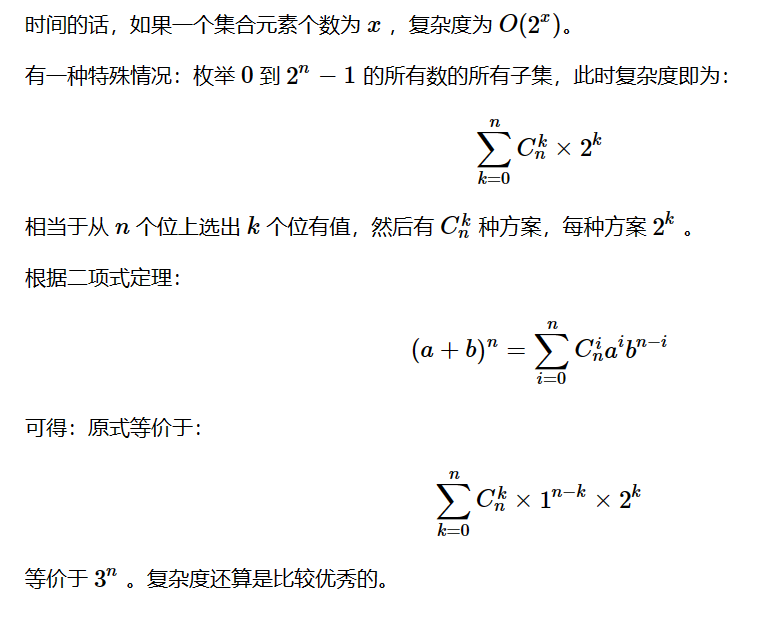发现只要式子中有一个数为奇数,整个式子就为 \(0\)。
把膜数代到每一乘积项中,容易发现这个东西就是一个 \(\text{Lucas}\) 定理。
卢卡斯定理有一个性质,那就是如果膜数是 \(p\),那么使用 \(\text{Lucas}\) 定理就和 \(p\) 进制数类似。
递归展开 \(\text{Lucas}\) 就容易发现对于 \({n \choose m}\),如果出现 \(n = 0,m = 1\) 即 \({ 0 \choose 1 }\) 的情况,那么这个式子就是 \(0\) 了。
根据 \(\text{Lucas}\) 定理 \(p\) 进制数的性质,直接位运算 \(n | m\) 即可判断一个组合数是否为奇数。
然后仿照最长上升子序列这样的问题写个 \(dp\) 转移就行了,转移就是枚举子集,因为转移条件是或运算,复杂度是 \(O(3^n)\) 证明大概就是二项式定理整整就出来了。
代码放一下,免得以后忘了枚举子集怎么写。
#include <cstdio>
#include <algorithm>
#include <cstring>
using std::max;
typedef long long ll;
const int MAXN = 211985 + 5;
const int MAXA = 233333 + 5;
const int MOD = 1e9 + 7;
int n, a[MAXN << 1];
int id[MAXA << 1];
ll f[MAXA << 1];
int main() {
scanf("%d", &n);
for (int i = 1; i <= n; ++i) {
scanf("%d", &a[i]);
id[ a[i] ] = i;
}
ll ans = 0;
for (int i = 1; i <= n; ++i) {
for (int s = (a[i] - 1) & a[i]; s; s = (s - 1) & a[i]) {
if (id[s] > i) {
f[s] = (f[s] + f[ a[i] ] + 1) % MOD;
}
}
ans = (ans + f[ a[i] ]) % MOD;
}
printf("%lld\n", ans);
return 0;
}
复杂度证明:



 posted on
posted on

